Example: Using the Framework
In this self-guided tutorial, you’ll follow along as Barb considers a few of the ways she can advance her career at IU with the help of a new job framework. You’ll see how a new job framework can help reveal the different career options available at IU. It will take you less than 10 minutes to complete this example. It’s recommended that you are already familiar with the basics of the job framework.
Introduction
In this example, you will see how:
- The job framework will organize roles in a transparent, simple, and consistent way that makes it easier for current and potential employees to see career evolution options at IU.
- Career evolution isn’t necessarily linear in the new framework; an individual’s “next step” is guided by personal development and career goals.
 Barb’s Exploring Her Career Options at IU
Barb’s Exploring Her Career Options at IU
Roles (jobs) will be clearly organized inside a new job framework using the structures shown below. This tutorial will walk you through how they’re constructed.
Let’s look at Barb’s background and career goals:
- Work history: IU employee for two years in current role; four years of previous payroll/accounting experience
- Education: High school diploma; currently working on Bachelor’s degree in Communications
- Career goals: Gain more experience within the finance function; gain experience in her field of study
Barb's current position:
- Job function: Finance
- Job family: Payroll
- Role: Payroll Coordinator
- Career structure: Non-exempt – Individual Contributor
- Career level: Mastery

Barb's Options
Barb begins to look at her career options using the job framework. The framework reveals three career options that Barb is interested in (there could be more).
Barb’s current position:
- Job function: Finance
- Job family: Payroll
- Role: Payroll Coordinator
- Career structure: Non-exempt – Individual Contributor
- Career level: Mastery
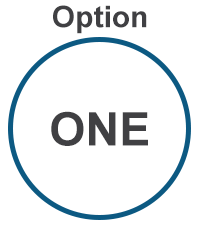 |
Grow into a NEW ROLE: Become a Payroll Specialist
|
 |
USE SKILLS in a NEW WAY: Become a Financial Administration Coordinator
|
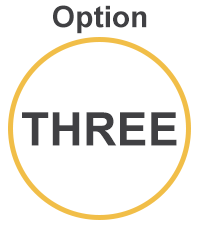 |
A BIG CHANGE: Become a Communications Assistant
|

Grow into a NEW ROLE: Become a Payroll Specialist
Barb’s ready for a new challenge. She thinks she might like to stay in the Finance job function and Payroll family, but she wants to prepare to move from her Payroll Coordinator role to a Payroll Specialist role when the opportunity arises.
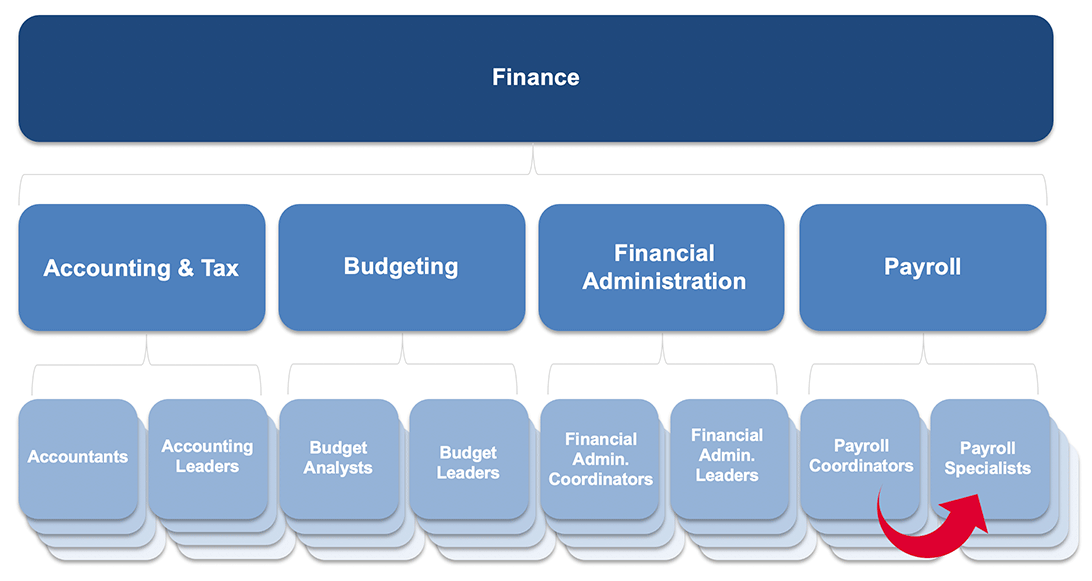
In this option, her career structure will change from Non-exempt – Individual Contributor to Exempt – Individual Contributor.
Her career level will change from the Mastery level to the Career level.
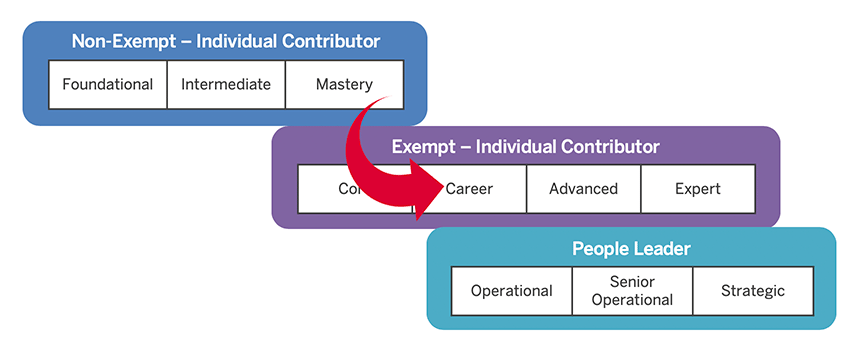

Use Skills in a NEW WAY: Become a Financial Administration Coordinator
Barb wants to diversify and use her existing skills in a new role, so she looks at a different job family within the Finance function—Financial Administration—to see what roles and levels are available. She is either looking because there is an opening or she might be planning her next career move.
In this case, she considers a new role in a new job family: Financial Administration Coordinator in the Financial Administration family. Since they’re in the same function, the skills required for both jobs are similar and transferrable. She can view the role descriptor for the new role to determine what skills she may need to develop to be ready for that new role when it’s available.
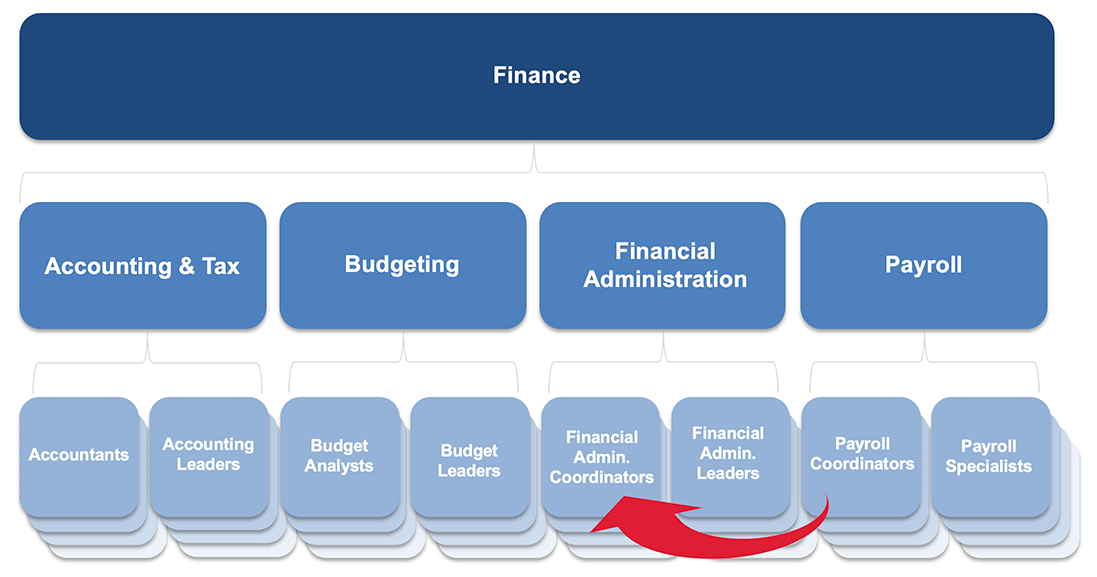
If she chooses this option, her career structure will remain the same: Non-exempt – Individual Contributor.
Because of her transferrable skills, her career level will remain the same: Mastery level.
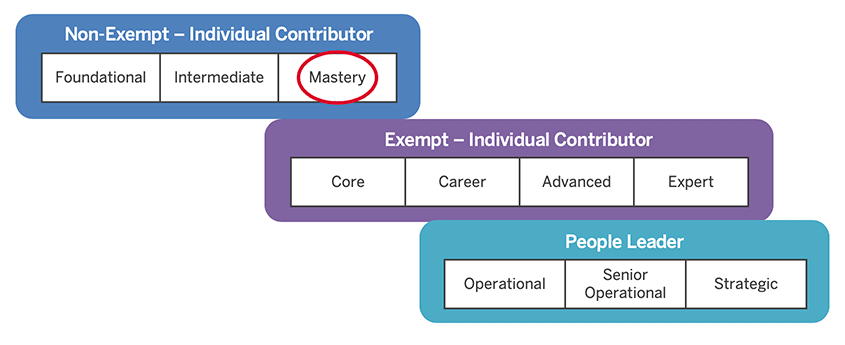
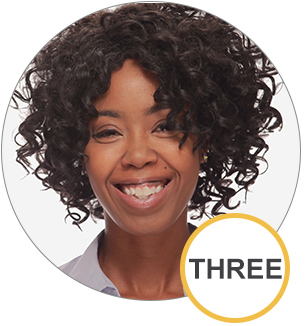
A BIG CHANGE: Become a Communications Assistant
Barb is ready for something new and wants to put her developing skills to work, so she explores a completely different job function and job family.
Because Barb is working toward her degree in Communications, she decides a role in the Marketing & Communications job function and Communications Generalist job family might be a good opportunity to use her new skills.
A Communications Assistant role might be a possible career move now (if the role is open) or in the future when the role becomes available. The role descriptor tells her the requirements, skills, and competencies required for the role, allowing her to determine if she might be interested in this role as part of her career and plan accordingly.
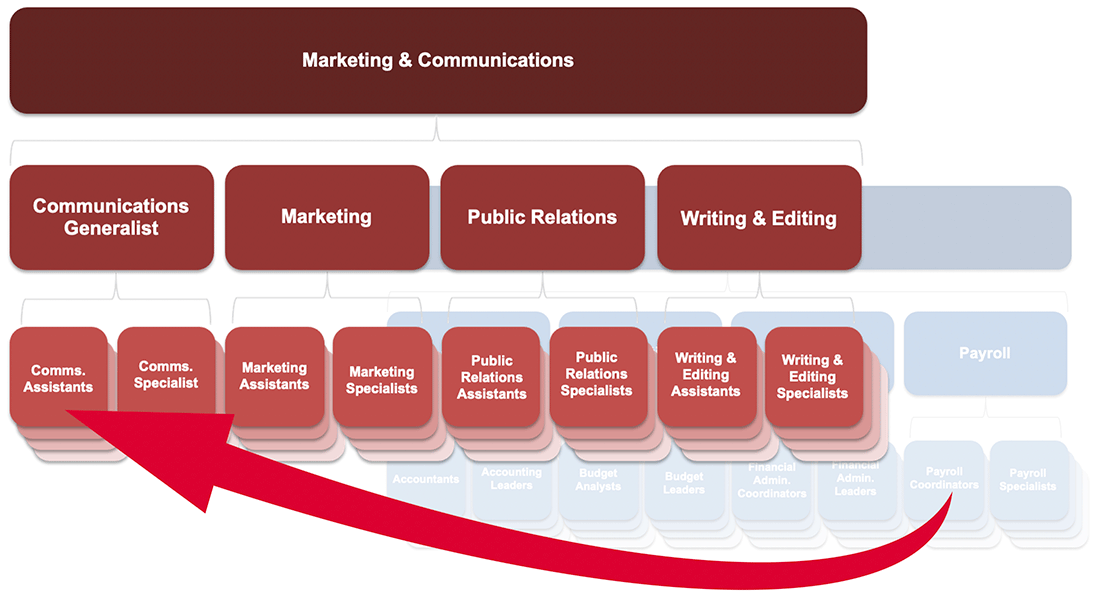
If she pursues this option, her career structure will remain a Non-exempt – Individual Contributor.
Because she’s still developing her skills in the Marketing & Communications field, Barb's career level will likely move to the Intermediate level. Barb considers this acceptable because it allows her to meet her goals of moving her career in a new direction.
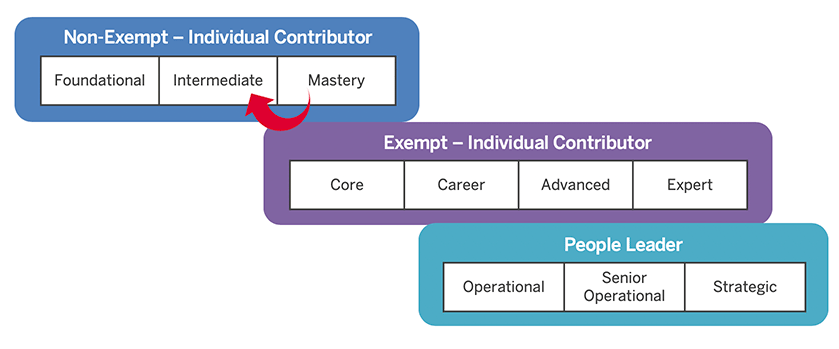
Summary
A new job framework will organize roles in a transparent, simple, and consistent way that makes it easier for current and potential employees to see career options at IU.
The new framework recognizes that a successful career means different things to different people. No matter what your career goals are, the new job framework allows you to navigate the roles at IU to see what’s available, how it’s related to your existing role, and how you can evolve your career.
Once you understand the terminology and know how to use the job framework to explore career opportunities, check out a few quick examples of how staff at IU can use it to meet their unique career goals.
